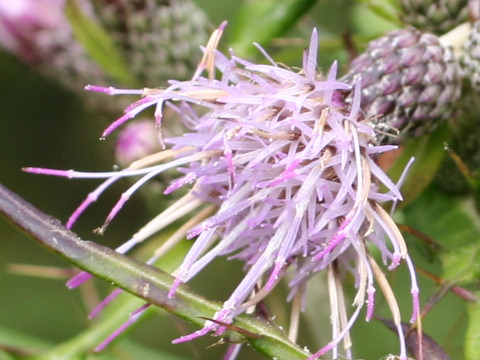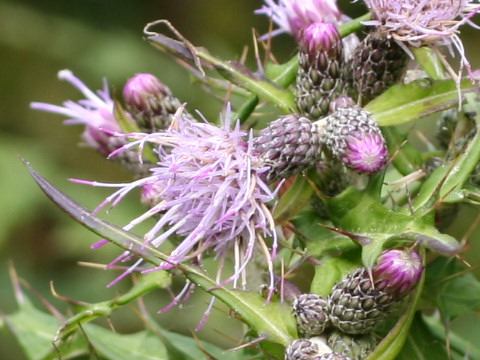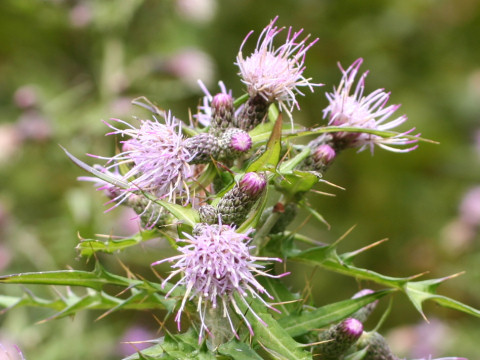 |






|

|
わが国の本州、岐阜・富山県以西から近畿地方に分布しています。関東地方から中部地方に分布する「あずまやまあざみ(東山薊)」の変種です。山地の林内や林縁に生え、高さは1.5〜2メートルになります。茎葉は長楕円形で先端が鋭く尖り、羽状に中裂から深裂します。9月から11月ごろ、淡紫紅色の頭花を上向きまたは斜め上向きに咲かせます。総苞は筒状で、総苞片はほとんど反り返らず、棘もありません。和名は、京都の比叡山に多いことから。
|

|
キク科アザミ属の多年草で、学名は Cirsium microspicatum var. kiotoense。英名はありません。
|

|
"Oharame-azami" (Cirsium microspicatum var. kiotoense) belongs to Asteraceae (the Aster family). It is a perennial herb that is distributed from Gifu and Toyama prefectures and westward to the Kinki region of Honshu in Japan. It is a variety of "Azuma-yama-azami", which is distributed in the Kanto to Chubu regions. It grows in forests and along forest margins in mountainous areas and grows 1.5 to 2 m high. The cauline leaves are oblong with sharply pointed tips and pinnately lobed to deeply lobed, and the pale purple-red flower heads bloom upward or obliquely upward from September to November. The involucre is tubular, and the involucral scale is rarely recurved and has no spines. The Japanese name comes from its abundance on Mount Hiei in Kyoto.
|

|
滋賀県大津市葛川中村町「白滝山」にて、2005年10月26日撮影。
|




